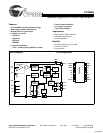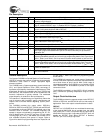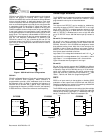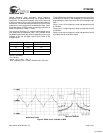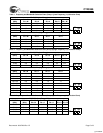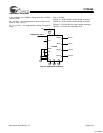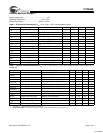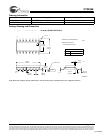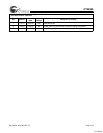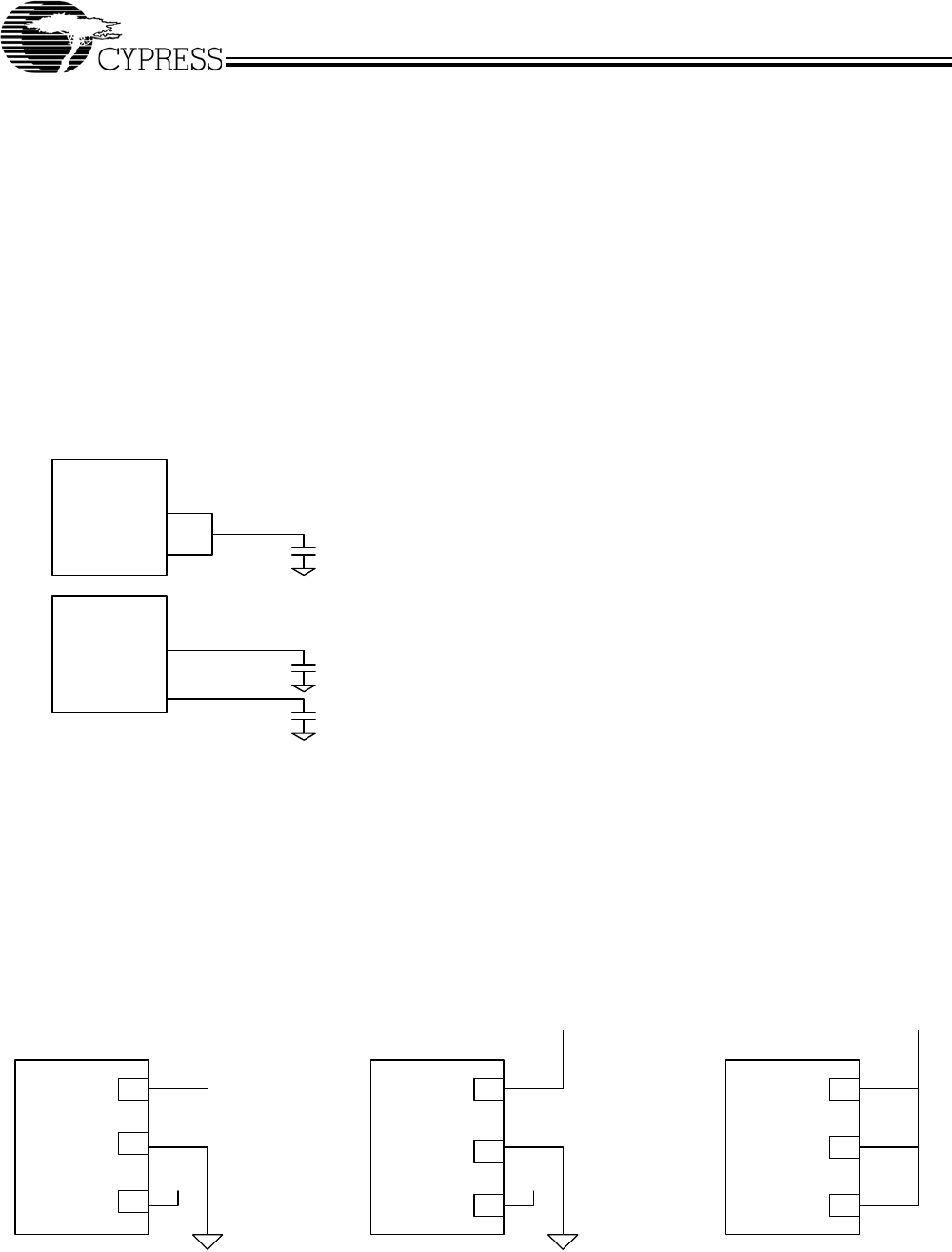
CY25566
Document #: 38-07429 Rev. *B Page 3 of 9
SSCLK1a/b
SSCLK1a and SSCLK1b are spread spectrum clock outputs
used for the purpose of reducing EMI in digital systems.
SSCLK1a and SSCLK1b can be connected in several different
ways to provide flexibility in application designs. Each clock
can drive separate nets with a capacitative load up to 15 pF
each or connected together to provide drive to a single net with
a capacitative load as high as 33 pF. When both clocks are
connected together, the CY25566 is capable of driving 3.3V
CMOS-compatible clocks to frequencies as high as 200 MHz.
If one clock output is not connected to a load, negligible EMI
will be generated at the unused pin because there is no current
being driven. The frequency and bandwidth of SSCLK1a and
SSCLK1b is programmed by the logic states presented to S2
and S3. The frequency multiplication at SSCLK1a and
SSCLK1b is either 1X or 2X, controlled by S2 and S3. The
modulated output clock SSCLK1 is provided at pins 8 and 9
with each pin having separate but identical drivers. Refer to
Figure 1 below.
SSCLK2
SCLK2 is a Spread Spectrum Clock with a frequency half that
of the SSCLK1a clock frequency. When SSCLK1a is
programmed to provide a 2.5% modulated clock at 1X times
the reference clock, 40 MHz for example, the frequency of
SSCLK2 will be 20 MHz with a BW of 2.5%. Note that by
programming the frequency of SSCLK1a to 2X, the frequency
of SSCLK2 will be 1X times the reference clock frequency.
Control Logic Structures
The CY25566 has six input control pins for programming VCO
range, BW %, Mod ON/OFF and REFOUT ON/OFF. These
programmable control pins are described below.
REFOFF
The output clock REFOUT can be enabled or disabled by
controlling the state of REFOFF. When REFOFF is at a logic
low(0) state, REFOUT is enabled and the reference clock
frequency is present at pin 3. When REFOFF is at a logic high
state (1), REFOUT is disabled and is set to a logic low state
on pin 3. REFOFF has a 400-KW internal pull-up resistor to
V
DD
.
S0 and S1 (Tri-level Inputs)
S0 and S1 are used to program the frequency range and
bandwidth of the modulated output clocks SSCLK1a/b and
SSCLK2. S0 and S1 of the CY25566 are designed to sense
three different analog levels. With this tri-level structure, the
CY25566 is able to detect 9 different logic states. Refer to
tables 5, 6 and 7 for the results of each of these 9 states. The
level of each state is defined as follows:
Logic State “0” is a voltage that is between 0 and 0.15 × V
DD
V.
Logic State “M” is a voltage between 0.4 × V
DD
and 0.6 × V
DD
V.
Logic State “1” is a voltage between 0.85 × V
DD
and V
DD
.
Figure 2 illustrates how to program tri-level logic.
S2 and S3
S2 and S3 are used to program the CY25566 into different
frequency ranges and multipliers. The CY25566 operates over
a frequency range of 25 to 200 MHz and a 1X or 2X multipli-
cation of the reference frequency. S2 and S3 are binary logic
inputs and each has a 400 K W pull-up resistor to V
DD
. See
Table 1, Table 2, and Table 3 for programming details.
SSCC
SSCC is an input control pin that enables or disables SSCG
modulation of the output clock at SSCLK1a/b and SSCLK2.
Disabling modulation is a method of comparing radiated EMI
in a product with SSCG turned on or off.
The CY25566 can be used as a conventional low jitter multiple
output clock when SSCC is set to low (0). SSCC has a 400-KW
internal pull-up resistor. Logic high (1) = Modulation ON, logic
low (0) = Modulation OFF. Default is modulation ON.
CY25566
CY25566
9
8
9
8
33 pf.
15 pf.
15 pf.
Figure 1. SSCLK1a/b Driver Configurations
CY25566
CY25566CY25566
13
12
10
VDD
S0 = "M" (N/C)
S1 = "0" (GND)
1313
12
12
10 10
VDD VDD
VDD
S0
S1
S0S0
S1
S1
SSCC = "1"
SSCC = "1"
S1 = "0" (GND)
S0 = "1" S0 = "1"
S1 = "1"
SSCC = "1"
Figure 2.
[+] Feedback



